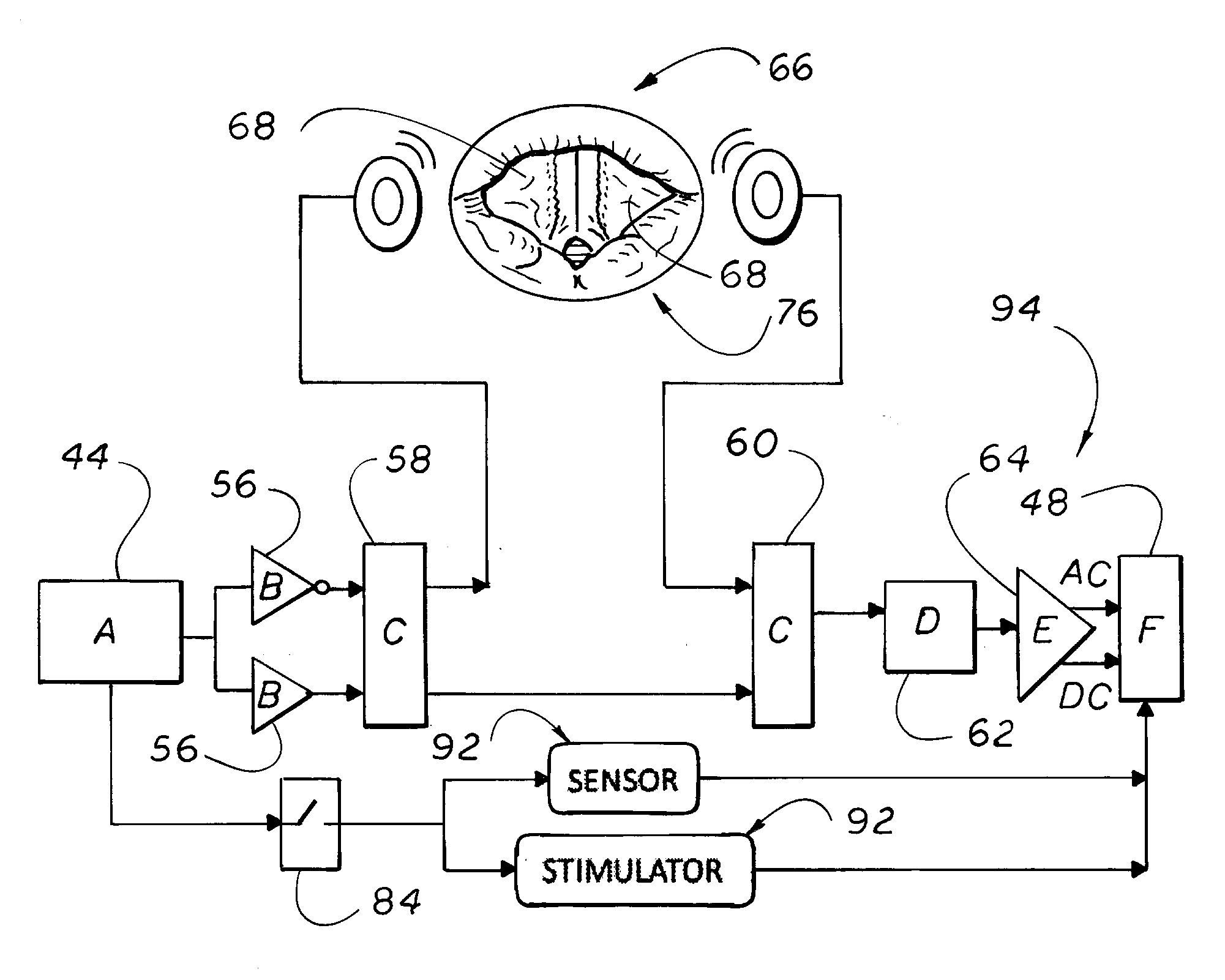Methods and devices for diagnosing and treating vocal cord dysfunction
a technology of vocal cord and diagnostic device, applied in the field of vocal cord diagnostic and treatment, can solve the problems of affecting the diagnosis of vcd, affecting the quality of life of patients, and affecting the quality of life of patients, and achieves the effects of reducing the risk of vcd, and improving the quality of li
- Summary
- Abstract
- Description
- Claims
- Application Information
AI Technical Summary
Benefits of technology
Problems solved by technology
Method used
Image
Examples
second embodiment
[0041]As illustrated in FIG. 5A, second embodiment of device 90 is shown. Therapeutic device 90 is similar to diagnostic device 30 in several components. Only the differences will be discussed in detail. Device 90 integrates fully functional miniaturized electrical stimulator 92 to target specific stimulation of the recurrent laryngeal nerve which caused opening of vocal cords 66 or vocal folds 68. There are two envisioned modes of stimulation: a) direct stimulation via implanted cuff electrode and b) non-invasive stimulation using surface electrode. This embodiment incorporates the non-invasive mode of stimulation. Device 90 includes stimulator 92 integrated on collar 32. As illustrated in FIG. 5B, stimulator 92 is integrated into control circuitry 94 along with trigger 84. Device 90 including trigger 84 and stimulator 92 and device 90 illustrates a proposed integrated solution that includes diagnostic and therapeutic intervention schemes on portable collar 32.
third embodiment
[0042]As illustrated in FIG. 6A, third embodiment of device 100 is shown as a hand held unit. Hand held device 100 is similar to collar-based device 30 or therapeutic device 90. The hardware and functionality of these versions is expected to remain identical. Hand held device 100 is envisioned to have removable electrode / recording pads 102 coupled to any form of circuitry 38 or 94. Electrode pads 102 could be pre-coated with electrode gel for application against neck 82 of patient 80. Electrode pads 102 are meant to be disposable after each use. Hand held device 100 may be cordless. This adaption of device 100 is intended for adults that do not wish to strap on collar 32 and also by physicians or caregivers available to monitor attacks by use of device 100.
[0043]As illustrated in FIG. 6B, detachable flap 104 is shown for use with any device of the present disclosure, such as collar device 30, hand held device 100 or therapeutic device 90. Detachable flap 104 includes at least one pa...
PUM
 Login to View More
Login to View More Abstract
Description
Claims
Application Information
 Login to View More
Login to View More - R&D
- Intellectual Property
- Life Sciences
- Materials
- Tech Scout
- Unparalleled Data Quality
- Higher Quality Content
- 60% Fewer Hallucinations
Browse by: Latest US Patents, China's latest patents, Technical Efficacy Thesaurus, Application Domain, Technology Topic, Popular Technical Reports.
© 2025 PatSnap. All rights reserved.Legal|Privacy policy|Modern Slavery Act Transparency Statement|Sitemap|About US| Contact US: help@patsnap.com



